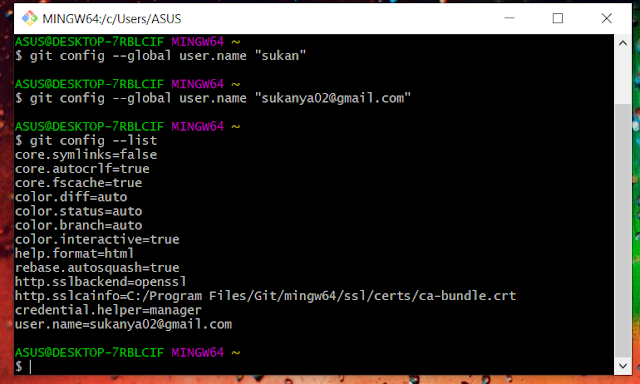Let me guide you
through the process to install Git in your system through this blog.
In this Install Git
blog you will learn:
Install Git On Windows
Step 1:
To download the latest
version of Git, click on the link below:
Great! Your file is being
downloaded.
Step 2:
After your download is
complete, Run the
.exe file in your system.
Step 3:
Select the path, where git should be installed.
Step 4:
Then, you will find a window prompt to select
components to be installed.
After you have made selection of your desired
components, click on Next>.
Step 5:
The next prompt window will let you choose the
adjustment of your path environment. This is where you decide how do you want
to use Git.
You can select any of the three options according to
your needs. But for beginners, I recommend using Use Git From Git Bash Only
Step
6:
Next
step is choosing HTTPS transport backend.
Click on Next>
Step 7:
Choose the terminal.
You can choose one from the options.
The default terminal of
MYSYS2 which is a collection of GNU utilities like bash, make, gawk and grep to
allow building of applications and programs which depend on traditionally UNIX
tools to be present.
Or you can choose the
window’s default console window (cmd.exe).
Step 8:
The next step is to
choose features for your Git. You get three options and you can choose any of
them, all of them or none of them as per your needs. Let me tell you what these
features are:
The first is the option
to Enable file system caching.
Caching is enabled through Cache manager, which operates continuously
while Windows is running. File data in the system file cache is written to the
disk at intervals determined by the operating system, and the memory previously
used by that file data is freed.
The second option is to
enable Git
Credential Manager.
The Git Credential Manager for
Windows (GCM) is a credential helper for Git. It securely stores your
credentials in the Windows CM so that you only need to enter them once for each
remote repository you access. All future Git commands will reuse the existing
credentials.
The third option is to Enable symbolic links.
Symbolic links or
symlinks are nothing but advanced shortcuts. You can create symbolic links for
each individual file or folder, and these will appear like they are stored in
the folder with symbolic link.
I have selected the first
two features only.
Step
9:
Now you have got all
you need. Select Launch Git Bash and click on Finish.
This will launch Git
Bash on your screen which looks like the snapshot below:
Step
10:
Let us proceed with
configuring Git with your username and email. In order to do that, type the
following commands in your Git Bash:
git config - - global user.name "<your name>"
git config - - global user.email "<your email>"
It is important to configure your Git because any commits that you
make are associated with your configuration details.
If you want to view all
your configuration details, use the command below:
git config - - list
Create GitHub Repositories
You have learnt to
install Git in your system and now its time to make repositories on GitHub that
will act as your remote repository.
Step 1:
Go to “www.github.com”
and like a piece of cake, all you need to do to Sign Up is fill up the
following form and click on Sign Up.
Step 2:
Choose if you want your
repositories to be private or public.
After choosing your plan, click on Continue
Step 3:
Confirm your email and
then click on Start
a project.
Step 4:
Name your repository and
click on Create
repository.
Your repository will look like this snapshot below:
Now, you are all ready to commit, pull, push and
perform all other operations using Git. If you want to learn how to perform
these operations and more, please checkout my blog.














